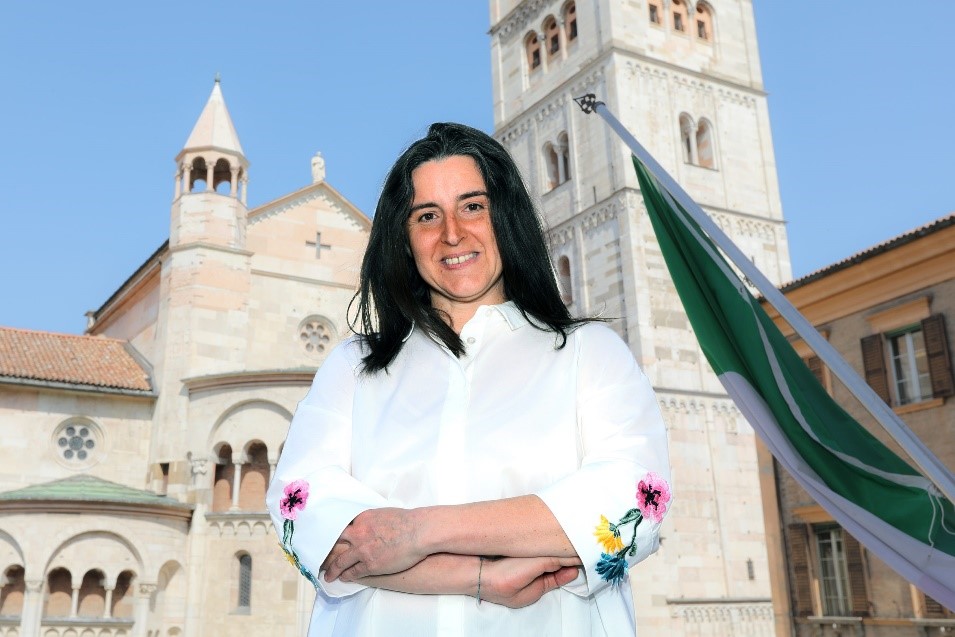
This article is available in all official EU languages:български (bg), čeština (cs), dansk (da), Deustch (de), Ελληνικά (el), español (es), eesti (et), suomi (fi), gaelic (ga), hrvatski (hr), Magyar (hu), italiano (it), lietuvių (lt), latviesu (lv), Malti (mt), Nederlands (nl), Polskie (pl), português (pt), română (ro), slovenčina (sk),slovenščina (sl), svenska (sv)

Covenant of Mayors signatory Modena, Italy, was recently featured in the Italian magazine Forum PA for its efforts in the field of decarbonisation and sustainability transition. They highlighted the potential of energy communities, but also importance of being part of the European Covenant of Mayors to achieve their goals.
It was first the G20 summit in Rome followed by the COP26 in Glasgow that have clearly highlighted the health condition of our planet and the importance of taking action without further delay by implementing an effective energy transition and developing an economic and production structure that takes environmental sustainability into account. The Municipality of Modena aims to be a protagonist in this energy transition to fight climate change. On the other hand, before the global COVID-19 pandemic, millions of people took to the streets to demand climate justice. Given that the social, health and climate crises are interconnected, these issues need common solutions. Energy communities could be one solution to tackle all these issues.
What are energy communities?
An energy community is based on a collaborative system between local public bodies, companies, businesses, and citizens, who choose to develop energy infrastructures from renewable sources and use self-consumption through a sharing-based model. This is a great tool to fight climate change, but also to combat energy poverty, which is affecting over 2 million Italian families. Since it directly involves the community, it accelerates the necessary awareness and training on such fundamental issues.
Energy communities should be recognized internationally as fundamental to achieving the objectives of the Paris Agreement as they are instruments which could fix several problems at one time.
User awareness and involvement
Energy Communities can involve a large number of social actors in the challenge of decarbonization. The proximity of the plants to consumers will result, in many cases, in installations on roofs or in the vicinity of buildings, shifting attention to the issue of active citizens’ engagement. The involvement of individual users and the economic benefits of these systems will lead the Communities members to more virtuous energy-efficient behaviours and, more generally, to a greater awareness of the dynamics that characterise the production, consumption and sale of electricity.
These elements can lead to the use of innovative technological solutions, such as a model which shapes the load profile depending the needs of the network, thus the consumers’ actions. By granting the end customers more responsibility, they will feel compelled to align their load and production profiles and carry out a first balancing of their own small system.
An evolving legal framework
The Renewable Energy Directive (RED II), its partial transposition and the conversion into law of the Italian Milleproroghe decree both define the legal framework of the energy communities. It establishes the possibility of creating communities that exchange energy for the purpose of both instant and deferred collective self-consumption.
The May 2021 Legambiente report entitled "Renewable Municipalities" surveyed at least 30 local configurations of energy communities using renewable sources and engaging in collective self-consumption. It is a movement running faster than the installations of large plants that shows a clear desire for a bottom-up approach.
The commitment of the Municipality of Modena to the Covenant of Mayors
The decarbonisation process has undergone a sharp acceleration in recent years and the issues of environmental, economic, and social sustainability have become central not only at the European level, but also in the policies of local authorities. Modena has a location that is critical for air quality, and therefore the green energy shift is particularly urgent to improve people's well-being.
The majority of AESS member municipalities have joined the Covenant of Mayors network and have drawn up Sustainable Energy and (Climate) Action Plans (SECAP). In the Municipality of Modena, the Plan was approved in February 2021 with the stated objective to reduce CO2 emissions by at least 55% by 2030, in line with the EU objectives. The Covenant of Mayors initiative had a positive impact on the national territory, with the involvement of a large number of cities and stakeholders and an increase in awareness of the climate issue.
Since some small and medium-sized municipalities have encountered internal problems, one should enable new tools and/or make existing ones more effective so they can participate at the fullest to the implementation of their Action Plans. This plan seems to work well because an increasing number of cities are proactively engaging with their local stakeholders and successfully creating energy communities.
Specific projects of energy communities
As a result of the co-financing of the EIT Climate-KIC European fund, in September 2019 AESS, ENEA and the University of Bologna have launched the GECO (Green Energy Community) project with the participation of citizens, local associations and businesses. By 2023 it will lead to the creation of the first virtual Energy Community of Emilia-Romagna, namely in Bologna.
GECO will facilitate the development of 8 new renewable energy power plants which will translate into a plant for the CAAB/FICO agro-industrial centre, a biogas plant for the disposal of organic waste, photovoltaic solar plants on several residential buildings, shopping centre, on the roofs of the Fashion Research Institute, ZR Experience and neighbouring companies.
All this for a total of 14 MW of new power generated by photovoltaic plants, which by 2023 will produce over 15.4 million kWh/year, with a reduction of 120 MWh/year of energy, avoiding the emission of 58,000 tons of CO2/year into the atmosphere.
The project is underway and involves the development of a platform for the analysis of energy flows (production, storage, and consumption), which is useful for securing energy flexibility within the Communities so Community members will be able to monitor their energy consumption and contribution to the Community.
Energy communities: open questions
The partial transposition of European directives regarding self-production and energy exchange has allowed the start of many initiatives, with incredible results considering that the law was approved just over a year and a half ago. But some critical issues emerged and some questions remain open.
The sizing of the energy communities
The sizing of the energy communities, based on an electrotechnical parameter, often turns out to be limiting concerning the participation potential that usually occurs in project experiences, especially for structures above 150 kW.
Incentives today only reward shared energy through a tariff regardless of the size of the plants. One of the critical issues identified is linked to the configurations of small plants, which prove to be sustainable only through tax deductions and the superbonus. To ensure the perpetuation of these bottom-up experiences, these projects need to be economically viable as well.
Governance of the mechanism
A delicate issue is the governance of the mechanism: challenged in Europe by an amendment that provides for the unbundling of the benefits due to members directly from their bills, it creates a series of potential complexities in the management and risks the invalidation of business models currently developed. Furthermore, in terms of governance, it is necessary to think of models that can be managed bottom-up for small configurations, without risking that complex management costs could affect the benefits and make them lose their appeal. We should also think of an active role for the managers in this sense, by applying the deduction directly in the bill, but in a free and not mandatory form.
A necessary acceleration to an attain climate-neutrality goal
Today, in Italy, more than 1.1 million renewable energy source plants satisfy 37.6% of the total electricity consumption and 19% of the total energy consumption, through a mix of technologies aimed at producing electric and/or thermal energy spread throughout all municipalities. In order to keep the commitments made and respect the deadlines, quick and concrete intervention is necessary to speed up the process. In this sense, a valid contribution could come from the energy community.
Details
- Publication date
- 7 December 2022
